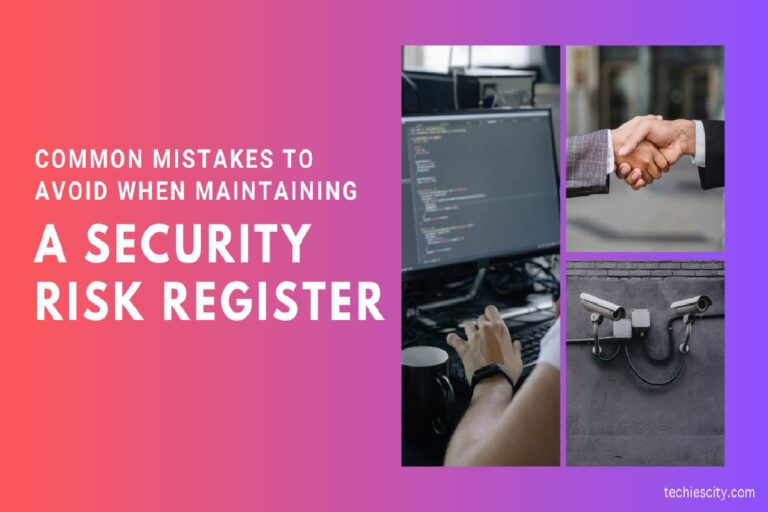In today’s digital age, businesses and organizations face an ever-growing landscape of security threats. From data breaches to cyberattacks, the importance of maintaining a comprehensive security risk register cannot be overstated. A security risk register is a structured tool that helps organizations identify, assess, and manage potential security risks.
However, maintaining an effective security risk register is not without its challenges, and there are several common mistakes that organizations often make. In this article, we will delve into these mistakes and discuss strategies to avoid them.
1. Incomplete Risk Identification
One of the most critical steps in creating a robust security risk register is identifying all potential risks. Unfortunately, many organizations fall into the trap of only considering the most obvious risks, leaving them vulnerable to unexpected threats. This mistake can arise from a lack of thorough research, a failure to involve key stakeholders or even a mindset that underestimates the scope of potential risks.
Solution: To avoid incomplete risk identification, organizations should conduct comprehensive risk assessments. This involves engaging with various departments, conducting regular security audits, and staying updated on the latest security trends and threats. Encouraging an open dialogue about potential risks can help uncover hidden vulnerabilities and ensure a more accurate risk register.
2. Inaccurate Risk Assessment
After identifying risks, the next step is to assess their potential impact and likelihood. A common mistake is assigning inaccurate values to these factors. Organizations might overestimate or underestimate the severity of a risk, leading to misallocation of resources and ineffective risk management strategies.
Solution: Implement a standardized risk assessment framework that includes clear criteria for evaluating the impact and likelihood of each risk. This could be a numerical scale or a qualitative system. Regularly review and update the criteria to ensure they align with the evolving threat landscape.
3. Ignoring Emerging Threats
The field of cybersecurity is dynamic, with new threats emerging regularly. Failing to account for these emerging threats is a grave mistake. Relying solely on historical data to inform your risk register might lead to inadequate protection against novel risks.
Solution: Stay informed about the latest cybersecurity trends and emerging threats. Engage with industry forums, attend conferences, and establish partnerships with cybersecurity experts. Regularly review and update your risk register to include new risks as they become relevant.
4. Lack of Communication
Maintaining a security risk register is not an isolated task. It requires input and collaboration from various departments and stakeholders. Failing to establish clear communication channels can result in a risk register that is incomplete, outdated, or based on inaccurate information.
Solution: Foster a culture of communication and collaboration across your organization. Implement regular meetings or reporting mechanisms where departments can share information about potential risks. Use technology to facilitate communication and ensure that all relevant parties are involved.
5. Static Risk Register
A risk register is not a one-time creation; it should evolve as your organization and the threat landscape change. Many organizations make the mistake of treating their risk register as a static document, resulting in outdated information and ineffective risk management.
Solution: Schedule regular reviews and updates of your risk register. This could be on a quarterly or semi-annual basis, depending on the nature of your organization and industry. Encourage all stakeholders to provide input during these reviews to ensure the accuracy and relevance of the risk register.
6. Focusing Solely on Technology
While technology plays a crucial role in cybersecurity, focusing solely on technological solutions is a mistake. Cybersecurity is a holistic effort that encompasses people, processes, and technology. Relying solely on technological tools can lead to neglecting vulnerabilities in other areas.
Solution: Implement comprehensive cybersecurity training for employees, emphasizing their role in maintaining security. Develop and document security protocols and incident response plans. Your risk register should reflect these broader aspects of cybersecurity beyond just technology.
7. Neglecting Risk Ownership
Each identified risk should have a designated owner responsible for its mitigation. Neglecting to assign risk ownership often results in risks falling through the cracks and not being adequately addressed.
Solution: Clearly assign ownership for each identified risk. This individual or team should be accountable for monitoring the risk, implementing mitigation strategies, and regularly updating the risk register with relevant information.
8. Overlooking Legal and Regulatory Factors
In many industries, compliance with legal and regulatory requirements is crucial. Ignoring these factors in your risk register can lead to serious legal and financial consequences.
Solution: Stay informed about the legal and regulatory requirements relevant to your industry. Ensure that your risk register includes risks related to non-compliance and that your risk mitigation strategies address these concerns.
9. Failing to Prioritize Risks
Not all risks are equal in terms of their potential impact and likelihood. Failing to prioritize risks can lead to the misallocation of resources, with less critical risks receiving undue attention while more serious threats are neglected.
Solution: Implement a risk prioritization framework that takes into account both the potential impact and likelihood of each risk. This helps you allocate resources more effectively and address the most significant threats first.
10. Underestimating the Human Factor
Human error remains one of the leading causes of security breaches. Neglecting to account for the human factor in your risk register can leave your organization vulnerable to avoidable mistakes.
Solution: Include risks related to human error, such as phishing attacks or improper handling of sensitive information, in your risk register. Provide regular training to employees to raise awareness about cybersecurity best practices.
Conclusion
In conclusion, maintaining a security risk register is a fundamental aspect of any organization’s cybersecurity strategy. By avoiding these common mistakes and implementing the suggested solutions, you can create a more accurate, comprehensive, and effective risk register. Remember that the threat landscape is constantly evolving, so regular updates and collaboration are essential to staying ahead of potential security risks.
About Author
My name is Manpreet and I am the Content Manager at Scrut Automation, one of the leading risk observability and compliance automation SaaS platforms. I make a living creating content regarding cybersecurity and information security.
Manpreet can be reached online at manpreet@scrut.io and at our company website https://www.scrut.io/















